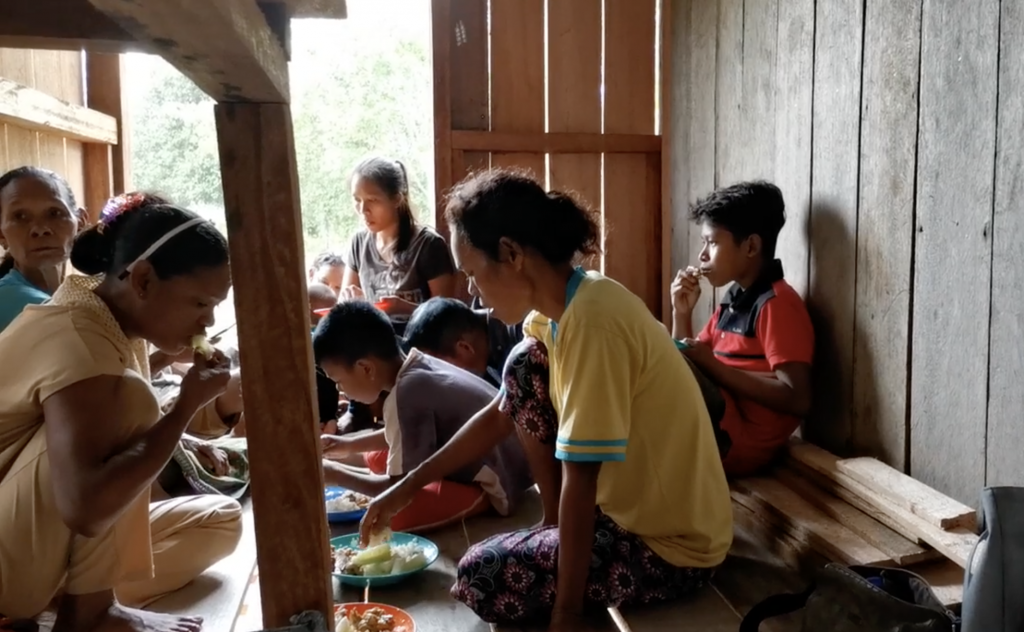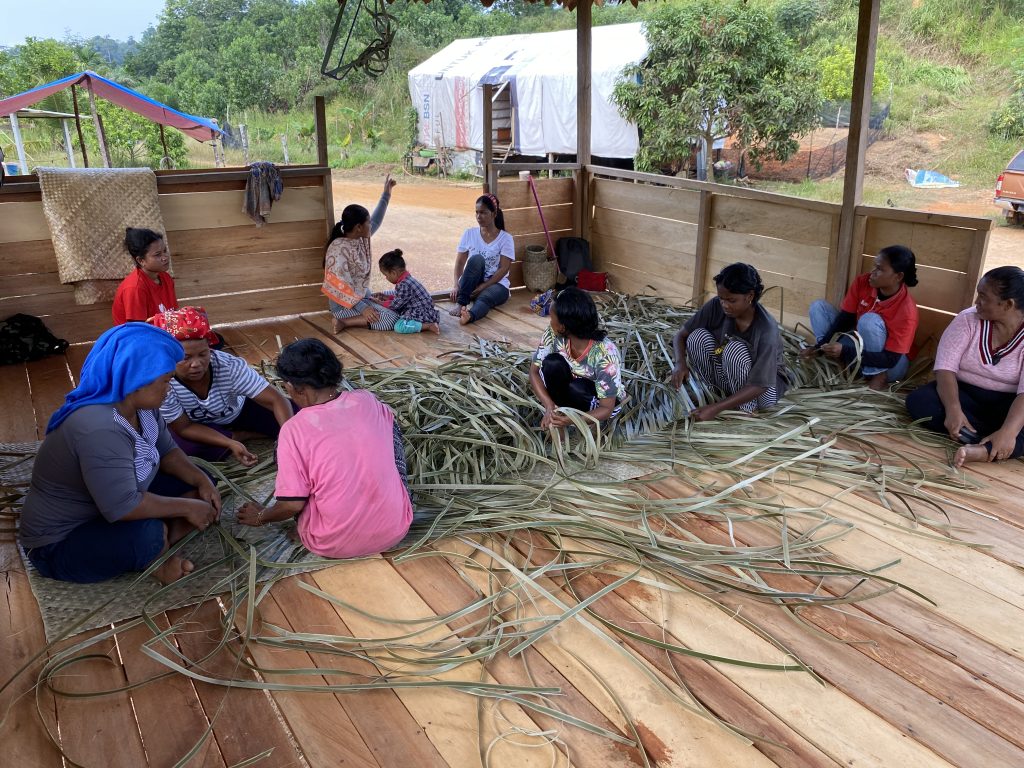Many Orang Asli (OA) villages have been in existence for over a hundred years and have a rich culture and tradition that has been passed down from generation to generation. The villages we work with in Pahang comprise mainly of the Jakun people. One of their traditions is the Rumah Adat, or community space.

The Rumah Adat in Kg. Teraling 
The Rumah Adat in Kg. Jong
The Rumah Adat is called this because it represents tradition, for us to maintain the customs and traditions of the Jakun people. This is why we want to build a Rumah Adat in our village, so we maintain our tradition.
Bibi, a villager from Kg. Teraling
The Rumah Adat is more than just a community space, it is an established space for OA villagers to uphold their cultural heritage, strengthen cohesion and hold community gatherings, training and village enterprise.
Although most of the villages we work with are familiar with the significance of the Rumah Adat, many did not have one in their village. This is because the Rumah Adat is traditionally built using materials such as wood and bamboo gathered from the forest. However, due to increased deforestation, many villagers are now unable to source for adequate materials.

Before: The Rumah Adat in Kg. Jenit during the building process 
After: Villagers of Kg. Jenit standing in front of their completed Rumah Adat
To support the OA villagers to build their own Rumah Adat, we provided materials such as zinc for the roof and cement. This is part of the All-Lights Village project, implemented in partnership with UNDP Malaysia. After months of working under the hot sun, as many as 6 villages have now completed building their Rumah Adat!
We combined our efforts to build our Rumah Adat. We carried wood, tied bamboo for the roof, cleaned up the area– we all worked together and put all our energy together as one village to build this
Bibi, a villager from Kg. Teraling
Since the completion, many villages have already begun decorating their Rumah Adat with their own Orang Asli crafts, strengthening and preserving their cultural identity. Villagers have also started utilising this space to hold community gatherings, celebrate birthdays and attend training projects. Some of the villagers also built a kitchen, allowing the community to cook and eat together in the Rumah Adat.

Orang Asli crafts in Kg. Jenit’s Rumah Adat 
Villagers in Kg. Teraling gathering in their Rumah Adat 
Villagers cooking in the Rumah Adat in Kg. Jenit 
Villagers eating together in the Rumah Adat in Kg. Jenit 
Villagers in Kg. Bukit Biru weaving in their Rumah Adat
Furthermore, many villagers have also started utilising the Rumah Adat to conduct children learning sessions. Previously, most of the children would either just study in their respective homes or attend learning sessions on a tarp under a tree.
“Before this, it was difficult for the children, they could only learn at home after school. Now with Rumah Adat, they can learn together here and I’m so happy because I love to teach them.
Liana, a villager and community teacher in Kg. Jenit

Liana, a villager from Kg. Jenit conducting Mobile School sessions in the village 
Mboh, a villager from Kg. Jenit conducting Mobile School sessions in the village
Although the Rumah Adat provides various opportunities for the villagers, many of them are unable to carry out any activities after dusk as many still lack access to basic utilities such as electricity.
This not only hinders their productivity at night but makes it difficult for children to study. To improve opportunities for OA villagers at night, we installed high-powered solar systems in the villages’ Rumah Adat.

Villager installing solar panels on the roof of the Rumah Adat 
The light in the Rumah Adat switched on
With high-powered solar, OA villagers are now able to install lights that add productive hours in the night, allowing them to carry out community gatherings or income-generating activities such as weaving. Additionally, high-powered solar also provides villagers with new opportunities to explore the use of other essential home appliances such as a fan and a freezer. For example, the villagers in Kg. Jenit installed a freezer in their Rumah Adat, allowing them to hunt, buy and store extra food in the freezer.

Nordiana weaving in the dark with wood as her source of light 
Nordiana weaving with the lights switched on in the Rumah Adat
“I felt sad because I could only rely on wood or diesel lamps for light. I was not able to weave. Now (with solar lights) it is easier. If I have mengkuang (pinescrew leaves), I will weave.”
Nordiana, a villager in Kg. Jenit
With each Rumah Adat equipped with high-powered solar, we hope that this will add more hours in the night for villagers, strengthen their cultural identity and provide them with opportunities to learn and develop new skills and knowledge.
Written by:
Lauren Chew, Communications Officer




















